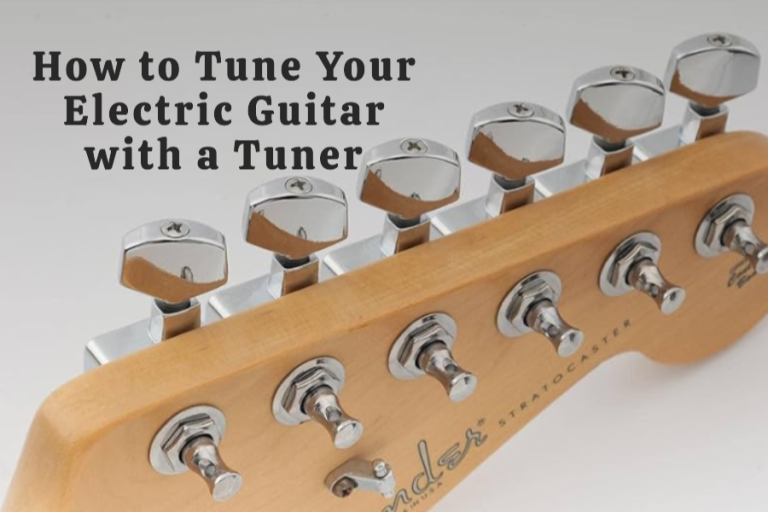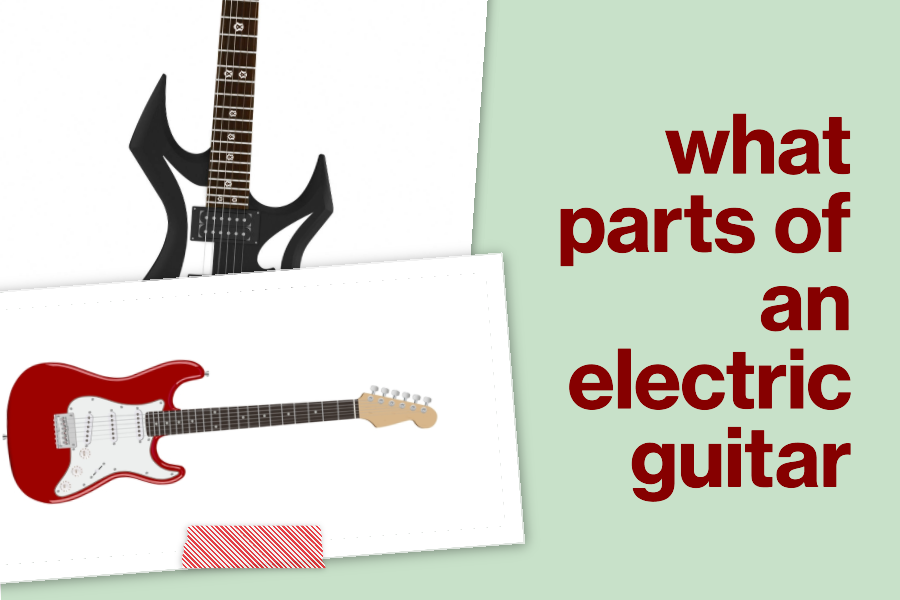
Electric guitars are more complex than acoustic ones in terms of their looks and how they work. So I think knowing what are the parts of an electric guitar is a challenge for a new beginner.
They’re the heart of rock, metal, and blues. Their sound and style have shaped music. You’ll be surprised, but an electric guitar usually has about 20 parts. Some have less. Understanding parts of an electric guitar is useful when you are shopping for a new guitar or chatting with other guitar players.
I am not here to bore you. My look at the electric guitar’s parts in this blog will be long but informative. Let’s start this cool journey through the parts of an electric guitar!
Three main sections of an Electric Guitar
Though there are even more 20 parts of an electric guitar, we can divided into three main sections first to help you quicky remember these key components of an electric guitar, these included: the guitar headstock, the guitar body and the guitar neck.
The Guitar Headstock
When you first look at an electric guitar, your eyes are likely drawn to the headstock. It’s not just there for looks, though it is one of the guitar’s most stylish elements.
The headstock often showcases the guitar manufacturer’s name and logo. This is where brands like Fender, Gibson, or Ibanez make their mark. It’s a blend of art and identity, giving each guitar its unique character.
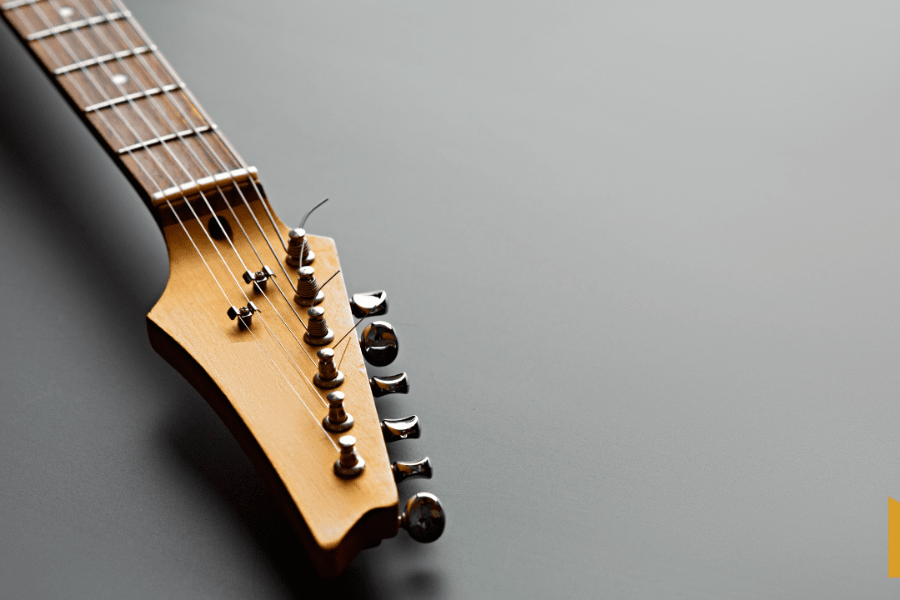
The headstock is made from the same wood as the neck. It’s a thin piece, designed to be strong and resonant. The headstock’s angle keep the strings tight and in tune. This angle ensures your guitar sounds just right every time you play.
It’s a key player in your guitar’s sound and playability where everything starts for your strings, setting the stage for those epic sounds you create.
The Guitar Body
The body of an electric guitar, typically made from hardwoods like alder, mahogany, or maple, plays a huge role in the tone of your instrument.
While most electric guitars have a solid body, you can also find semi-hollow and fully-hollow models. The type of wood directly influences the sound you get.
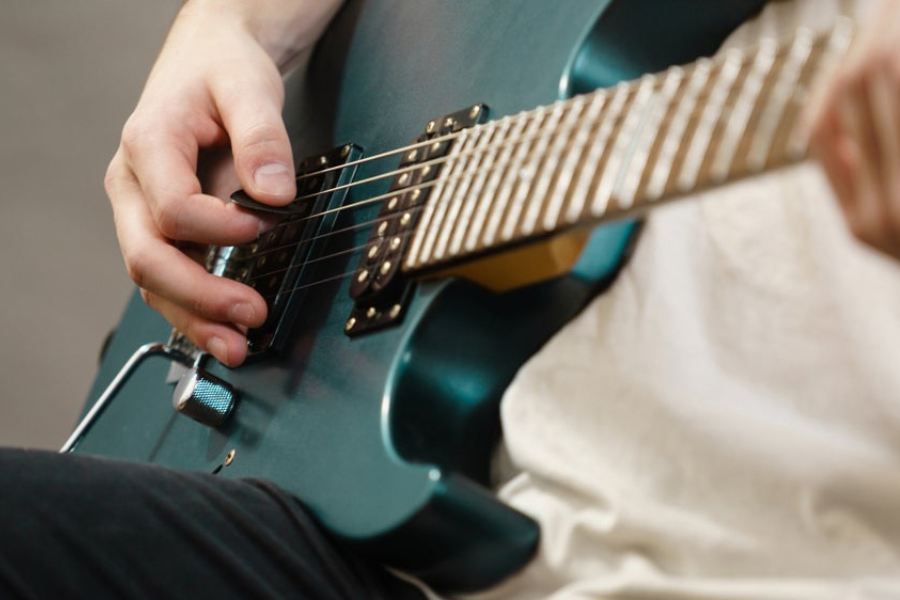
The Guitar Neck
The neck is that long stretch of wood that shoots out from the body of your guitar, and it’s not just a stick for holding the strings up. Think of it as the bridge between you and the music you create.
It houses the fretboard, where all the magic happens—your fingers dancing across the frets to create melodies and chords. But there’s more to it than meets the eye. Inside the neck, hidden from view, is the truss rod. Without the truss rod, our guitars would warp under pressure, making them unplayable.
Most electric guitars have their necks bolted onto the body, ensuring a strong, secure connection that affects the instrument’s sound and sustain.
Different Parts of The Headstock
Tuners
You might hear tuners referred to as machine heads, tuning keys, or simply tuners. Whatever name you use, they all serve the same purpose: keeping your strings in tune.
Tuners are where the strings are attached and where you tune them to get that perfect pitch.
There are two main types of tuning machines – standard and locking. Locking tuners let you change strings faster and add a bit more stability to your tuning. This can be useful, especially if you’re playing live and need quick string changes.
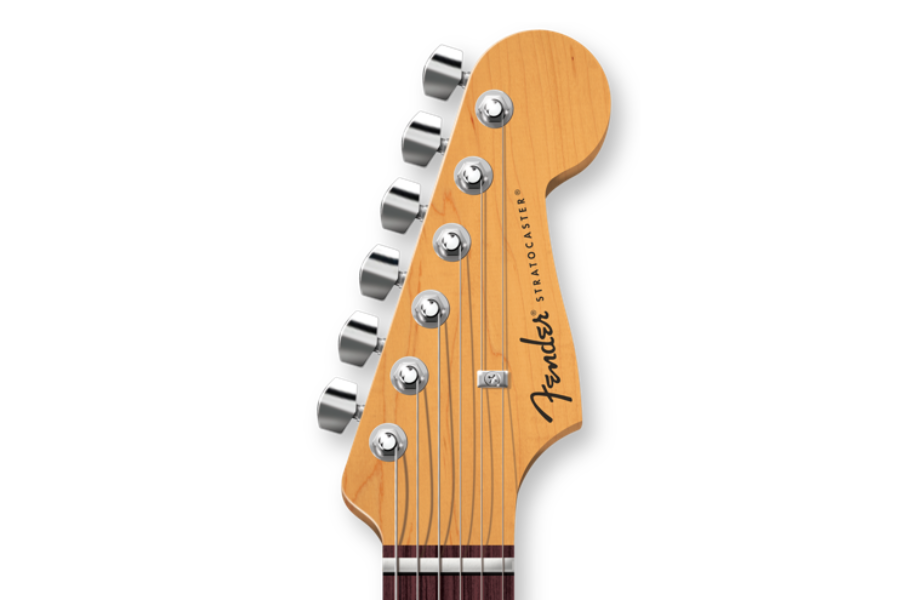
For guitars with six inline tuners, staggered tuning machines are a great feature. They maintain a consistent angle from the low E to the high E strings. This helps in keeping your guitar in tune across all the strings.
Different guitar brands have their unique tuner arrangements. Some might place all six tuners on one side of the headstock, while others go for a 3+3 arrangement – three on one side, three on the other. These arrangements can affect the tension and feel of the strings.
String Retainers
Let’s zoom in on a small component of your electric guitar that often flies under the radar: the string retainers. You’ll typically spot these little helpers on guitars with straight headstocks, like those you see on Fender models.
These parts apply just the right amount of downward pressure to keep the strings securely in the nut’s slots, especially given the straight angle of the headstock. Depending on your guitar’s design, you might see one or two of these string retainers.
Different Parts of The Guitar Neck
Nut
Sitting at the top of the neck, the nut may seem trivial, but its function is to direct the strings in a straight down the neck.
The nut’s main job is to keep the strings securely in place on your fretboard. Without it, the strings will slide around . It’s also determines the strings’ height above the fretboard, known as the string action. This is especially important in systems like the Floyd Rose locking tremolo, where precision is key.
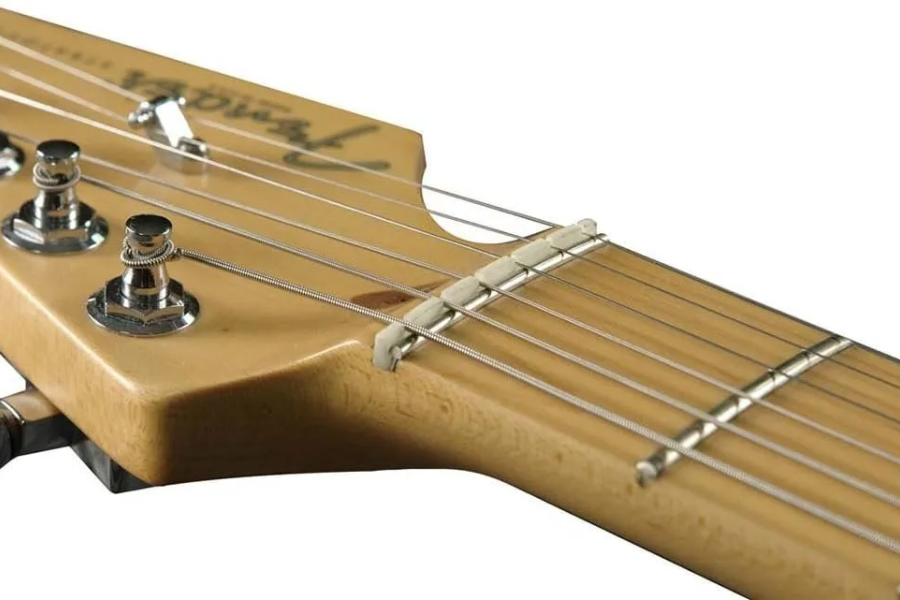
Nuts can be made from plastic, bone, or composite materials various materials, each affecting your guitar’s tone and feel. With plastic nuts, your electric guitar can produce softer, less bright tone. However, it is considered to be less durable than bone or high-quality composites.
If you’re changing to heavier gauge strings, adjusting the nut is crucial. This ensures the strings fit properly and maintain the right tension and height. It’s a delicate process, so take care or seek professional help if you’re unsure.
And just for fun, in the guitar world, a ‘guitar nut’ is also someone crazy about guitars – maybe like you and me!
Truss Rod
You can find the truss rod right at the top of your guitar’s neck, just behind where the strings start. This part is responsible for preventing the neck from bending.
This stands up to the tension, ensuring the neck stays straight and balanced. Without some backup, the neck would eventually give in, bending under the pressure.
Frets
Frets are key parts of your electric guitar for changing notes when you play. Most frets are nickel silver. Some guitars have stainless steel frets. These last longer, perfect if you play a lot.
Many electric guitars have 22 frets. Some have 24, giving you two full octaves. At the 12th fret, you get the same notes as open strings, just higher.
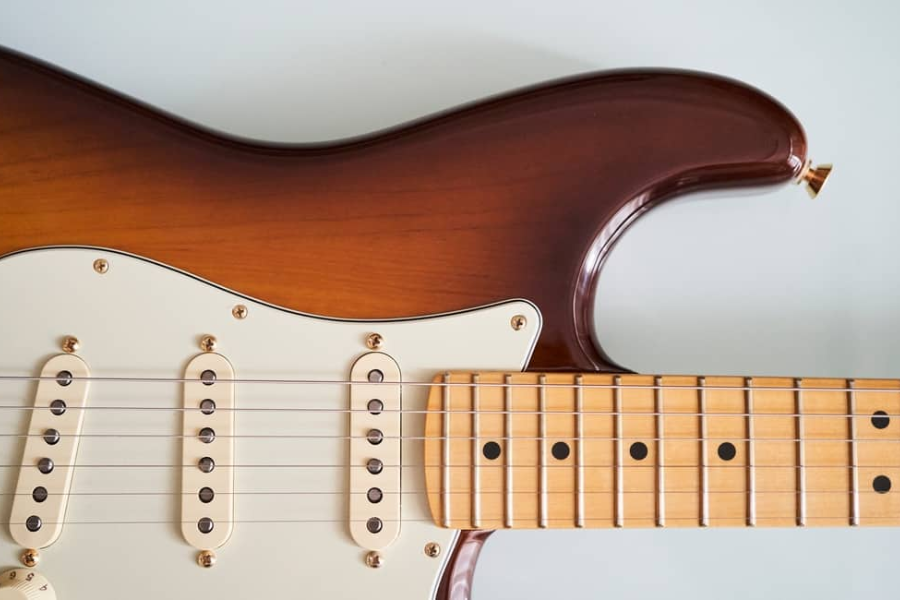
Frets are spaced based on the guitar’s neck length, or scale length. A longer neck means more space between frets and their spacing depends on your guitar’s size.
Fret markers
Fret markers are those dots or shapes you see on the fretboard. They’re usually at the 3rd, 5th, 7th, 9th, 12th, 17th, 19th, and 21st frets. The double inlays at the 12th fret are a common feature.
These markers are there to help you. They guide you to the right notes when playing. Often made from materials like abalone or luminous stuff, they’re easy to see, even on a dark stage.
The Fretboard
The fretboard, or fingerboard, sits on top of the neck. It’s where your fingers spend a lot of time, pressing down on the strings.
Made from woods like maple or rosewood, each type gives your guitar a different look and feel. The frets are laid out on this thin piece of wood, ready for your music-making magic.
Strings
Your electric guitar typically has six strings, tuned E-A-D-G-B-E, from thinnest to thickest. These strings are made of metal and stretch from the bridge to the headstock. Thinner strings give you a brighter sound, while thicker ones add a bass-rich tone.
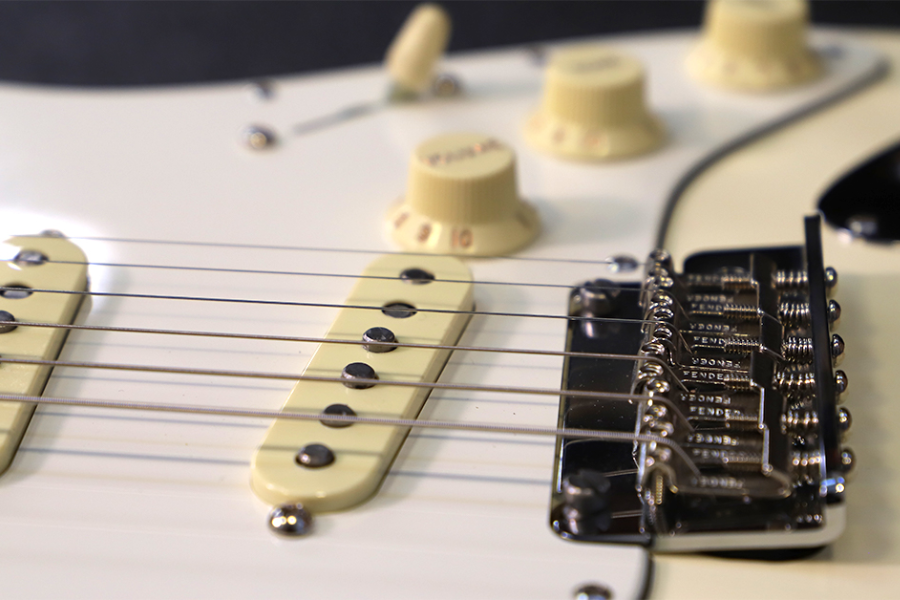
You’ll find strings like roundwound or flatwound, each with its own feel and sound. The vibration of these strings is picked up by your guitar’s pickups, creating that electric sound we all love. Remember, the last three strings are thicker than the first three, giving you a range of tones to play with.
Different Parts of The Guitar Body
The Pickguard
Sitting under the strings, the pickguard is a flat, plastic piece that comes in various shapes and patterns. It’s not just for show – it protects the body of your guitar from scratches.
Pickups
You’ll usually find two or three pickups nestled under the strings, each with its own character.
The bridge pickup, sitting close to the bridge, gives you a crisp, bright tone, perfect for cutting through a mix.
Then there’s the middle pickup, offering a balanced sound that’s just right for, well, everything in between.
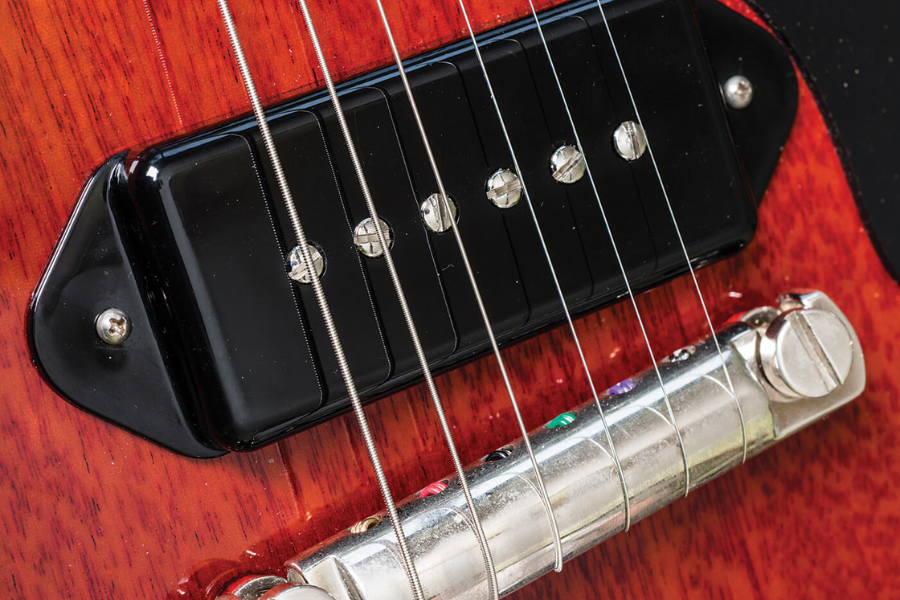
And don’t forget the neck pickup, near the top of the neck, which delivers those warm, rich tones ideal for soulful solos.
Your guitar likely has a switch that lets you choose which pickup(s) to use, allowing you to blend and shape your sound.
Pickup selector switch
This switch is your command center for choosing the voice of your guitar in the moment.
Whether you’re after the warm, soulful tones from the neck pickup, the bright, cutting edge of the bridge pickup, or the balanced vibes of the middle pickup, this switch puts the control right at your fingertips.
It’s how you can swiftly shift from a rhythm to a lead tone, or from jazz smoothness to rock aggression, all without missing a beat.
The Bridge
The bridge is vital for fine-tuning the strings’ intonation (pitch accuracy) and action (string height). It’s essential for producing the optimal sound output from your guitar.
You’ll find the strap button at the bottom of the guitar body and near the top of the neck. This is where you attach your strap, keeping your guitar secure while you play.
Volume & Tone Knobs
The volume and tone knobs let you adjust the output signal’s magnitude. This means you can control how loud your guitar is and tweak the bass and treble output to your liking.
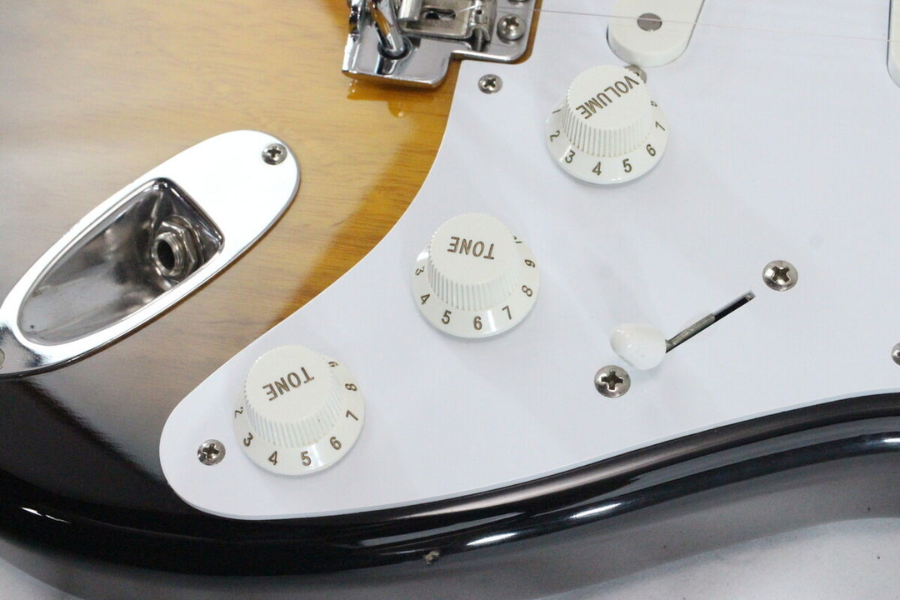
The Output Jack
The output jack, usually a ¼ inch plug, is where you connect your guitar to an amplifier. This is how your guitar’s sound gets amplified and heard.
Saddles
Each string rests on a saddle, which has screws for setting the intonation. This ensures each string is perfectly in tune along the fretboard.
The Tremolo Bar
Also known as the whammy bar, this special bridge attachment lets you change the tension of the strings. This means you can create effects like pitch bending, vibrato, and dramatic “dive bombs”.
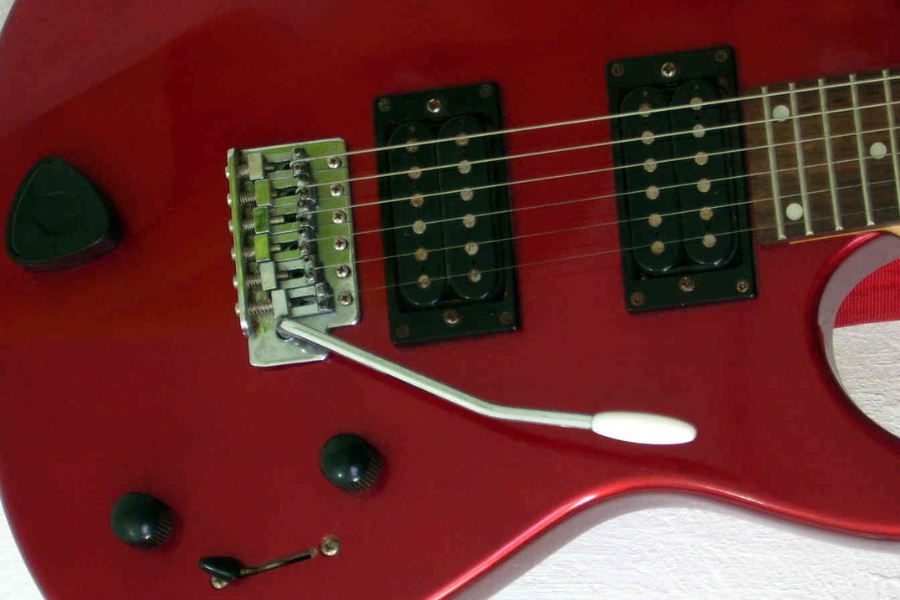
My advice for beginners
At the first time I started learing how to play an electric guitar, it’s challenging for me to fully understand all of these parts. This is due to the fact that electric guitars come with a bit more complexity—think than pickups, amplifiers, and effects.
You’ll need a few extra bits like cables and an amp, but this gear is your toolkit for expression. The difference in quality between budget-friendly electrics and their higher-end counterparts isn’t as vast as you might think.
More expensive models boast superior craftsmanship and materials, but a solid electric guitar is fundamentally a piece of wood with pickups. The right setup can make an affordable model sing.
As you step into the world of electric guitars, embrace the learning curve. Familiarize yourself with the parts of your electric guitar—each one contributes to your sound and playing experience.
And remember, whether you’re adjusting pickup settings, experimenting with amp dials, or dabbling in effects, each adjustment is a step on your path to finding your unique voice. Don’t be daunted by the extra knobs and switches.

